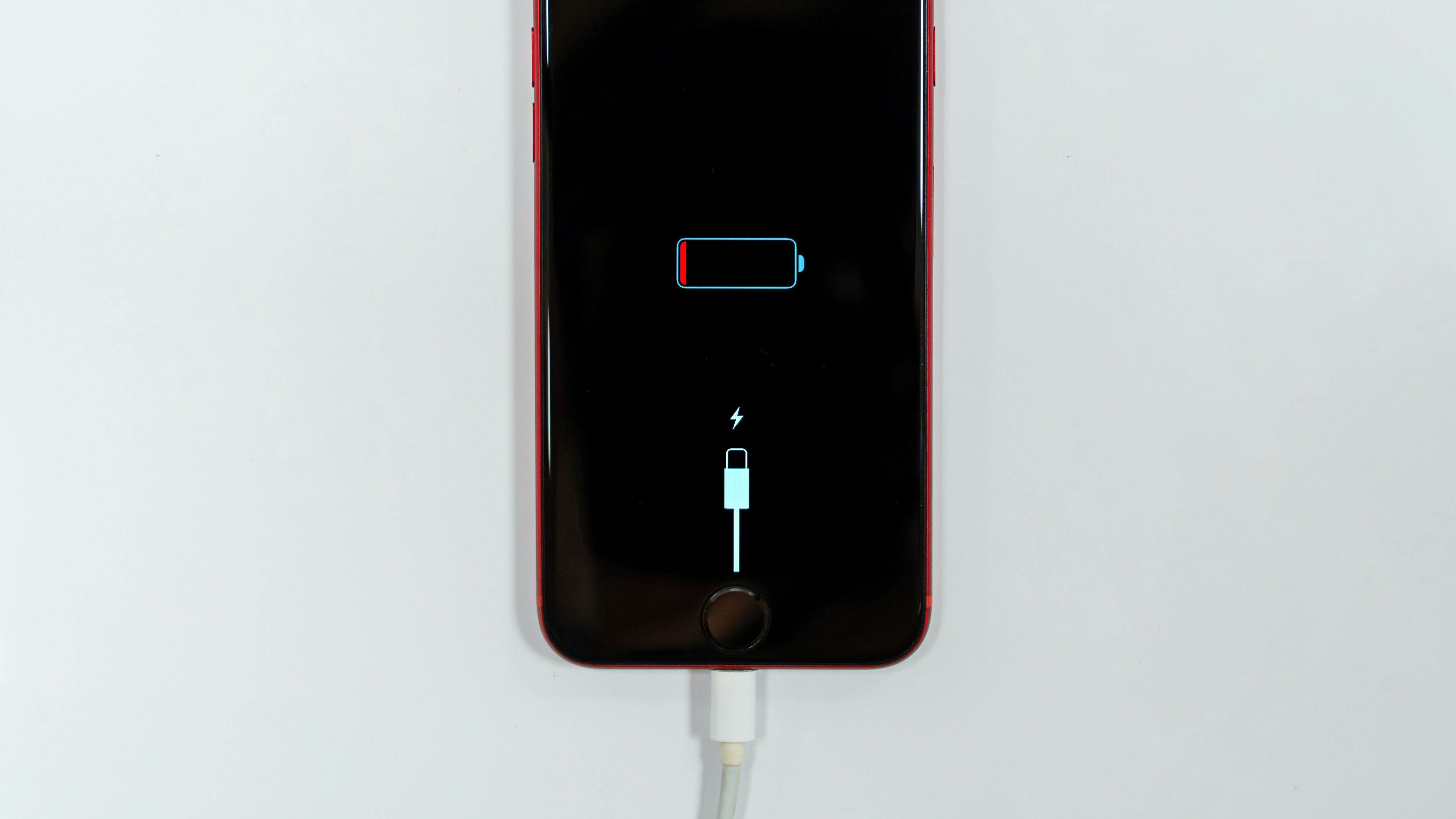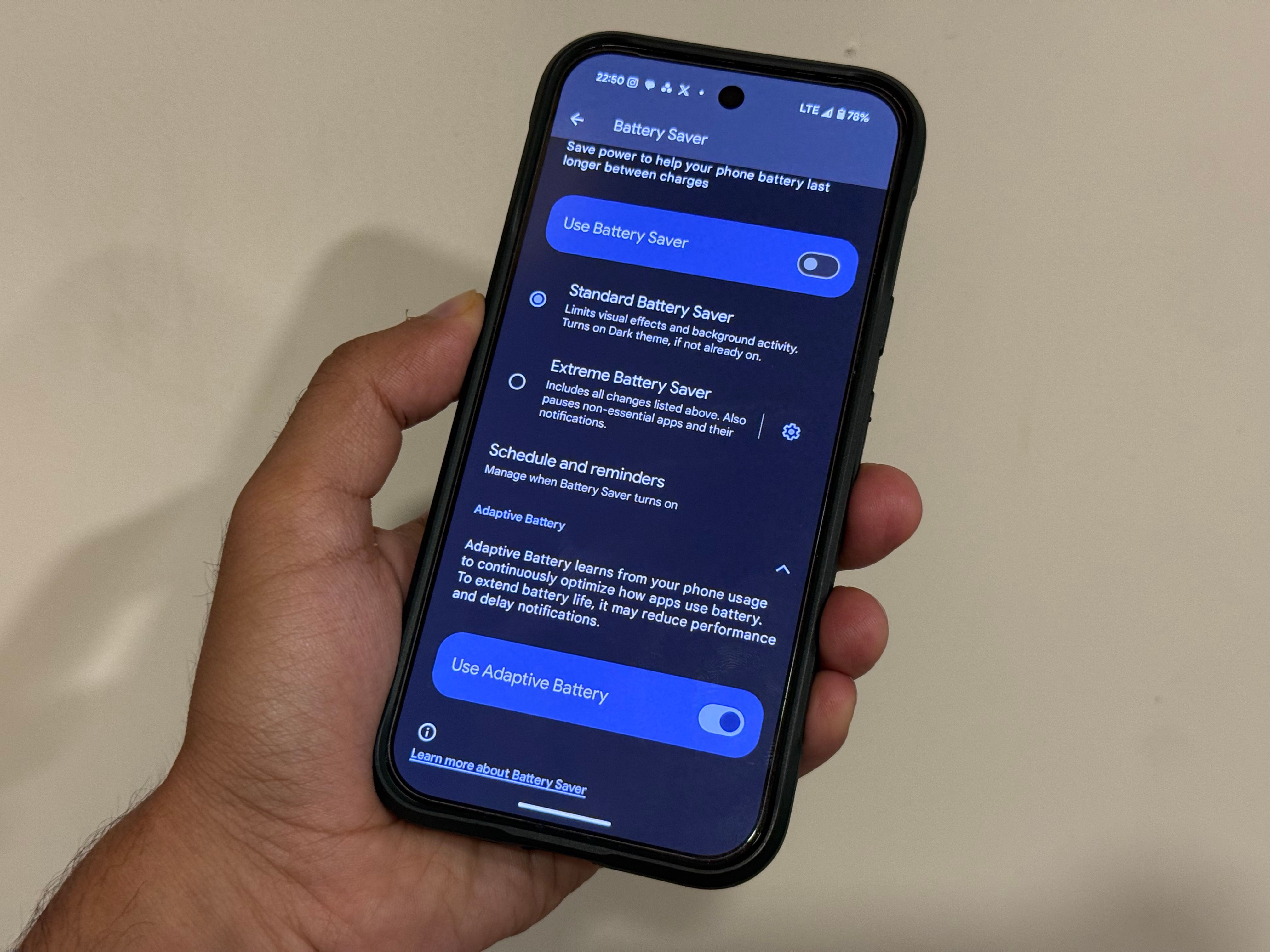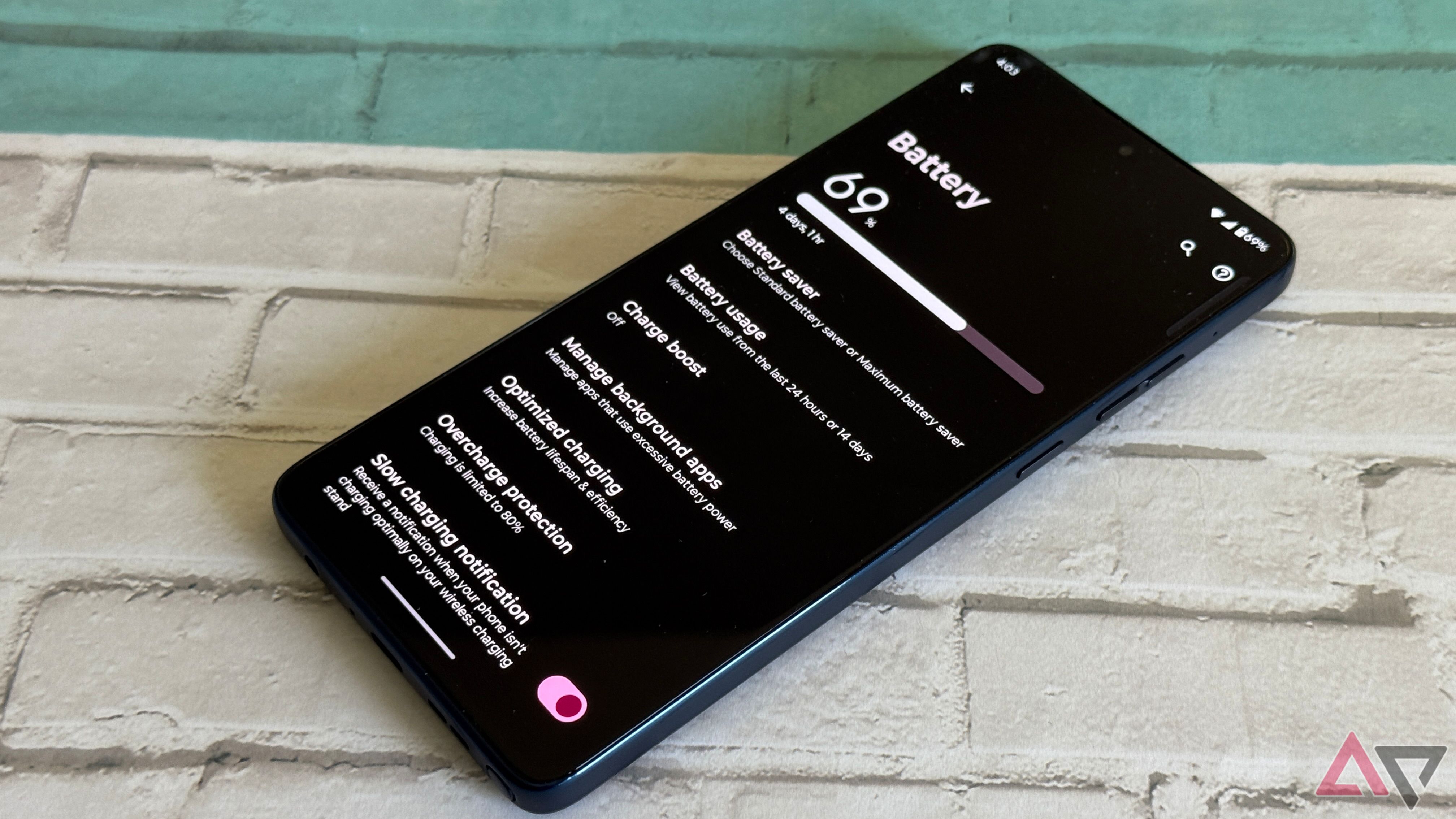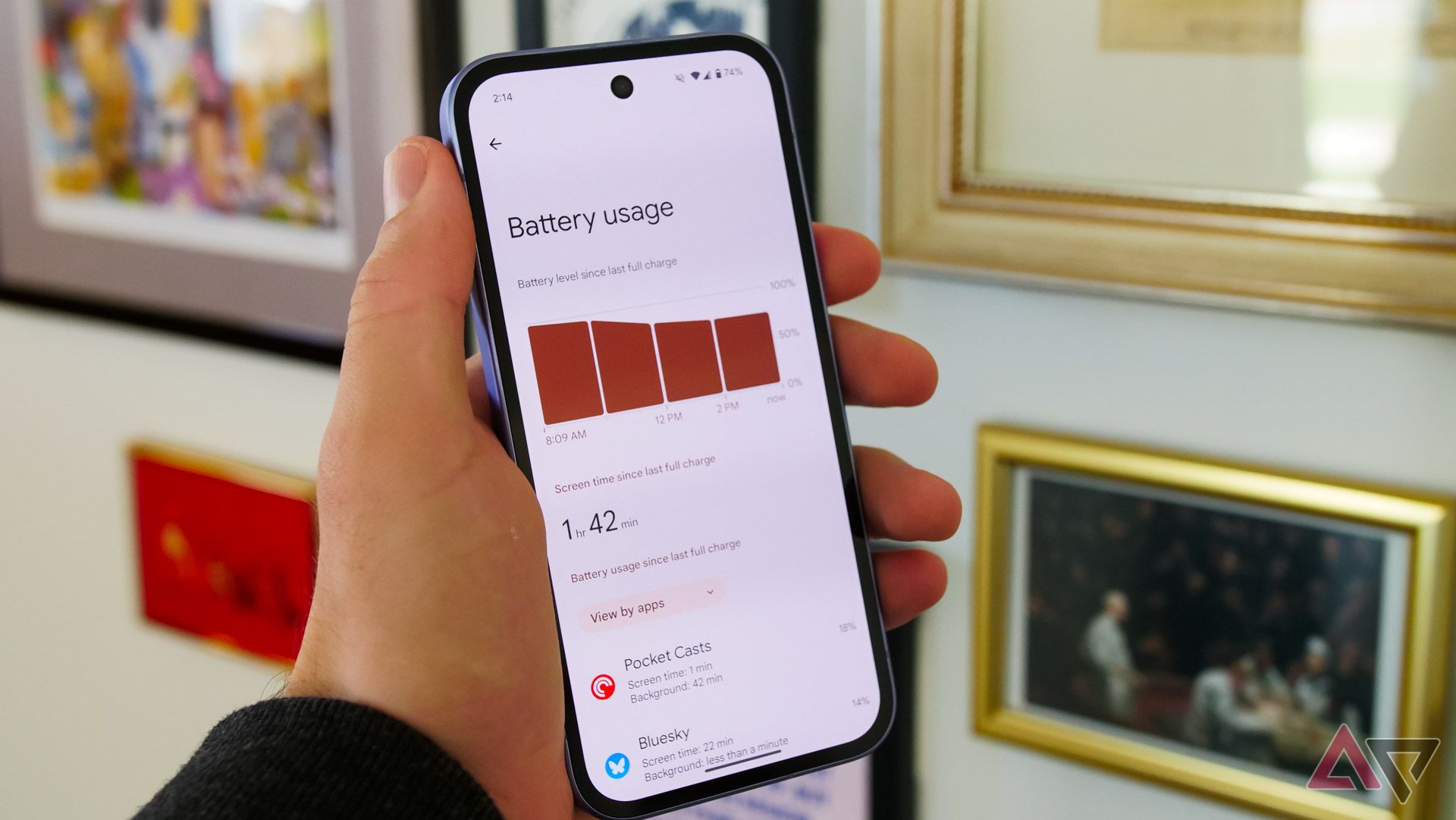When booking a late-night cab, navigating a new city, or killing time at the airport waiting for a delayed flight, my phone’s battery has a knack for giving up on me when I need it the most. Usually, at the worst possible moment.
Now, I’ve tried all the usual fixes, such as lowering brightness, closing apps, and switching on Battery Saver mode.
However, those fixes didn’t help all that much. I found myself glued to power banks and power sockets, even while on the go, and much more often than I’d like to admit.
That’s when I discovered a feature called Adaptive Battery, built right into my phone. I had ignored it for years, but as this was my last attempt at sorting out my battery woes, I went for it. The difference was dramatic.
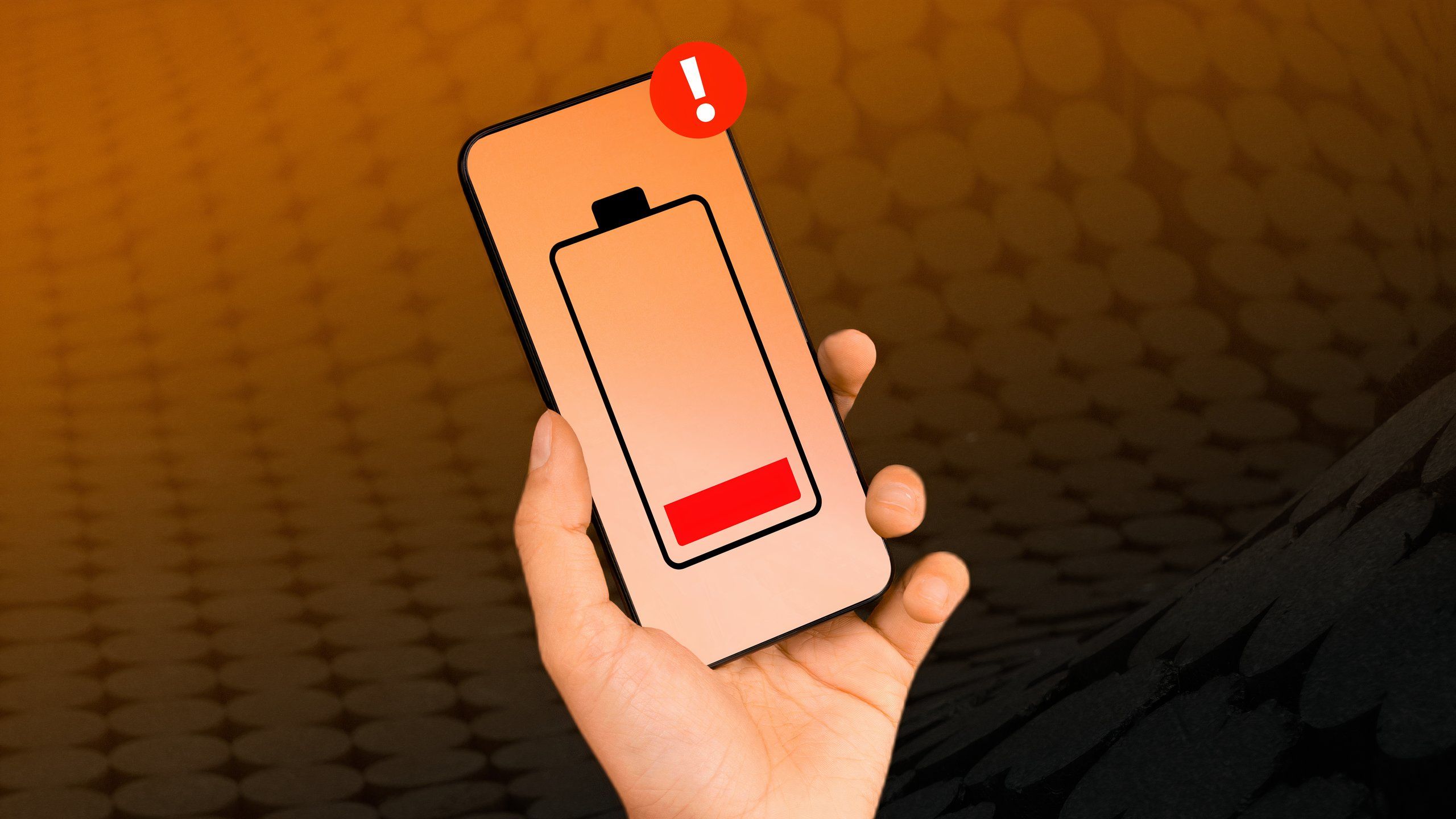
Related
The truth about phone battery myths: What actually extends battery life?
We reveal the secrets on battery saving
What is Adaptive Battery?
How your phone learns to save battery life
Source: Wengang Zhai/Unsplash
Most of us think battery life is all about capacity and usage. If your phone dies early, the answer must be that you’re using it too much or that the battery is too small. That’s partially true.
What I didn’t realize was how much energy is quietly drained in the background, by apps and processes I didn’t remember opening.
If you’re running a phone made in the last five years, your device likely has the Adaptive Battery feature built into it. It can be a bit hard to find, tucked away in the settings menu.
And unlike many other features, you don’t see it working in real time. However, that’s what makes it powerful.
Adaptive Battery uses machine learning to understand how you use your phone, the apps you open frequently, those you only use at night, and those you ignore for long periods of time.
Android’s built-in algorithms take all those factors and more into account, and restrict battery usage for apps you rarely open, prevent them from running in the background, and schedule system tasks more intelligently.
It’s effectively a quiet personal assistant running in the background, learning your usage habits, and optimizing everything so that your phone wastes less power doing things you don’t care about.
While consumer-facing AI is a relatively new addition to Android, Adaptive Battery uses AI algorithms and has been a long-standing part of Google’s push towards smarter battery use.
You might’ve come across features like Adaptive Brightness and App Standby that similarly work in the background to optimize battery use.
Essentially, the more you use your phone, the smarter it gets at preserving battery life.
How it made a difference in my use
A subtle change that can give you hours of battery life
I didn’t notice anything dramatic the first day, or even the first week. No pop-ups or charts showed instant gains. However, by the end of the week, the differences began to show up.
My battery wasn’t dipping as fast. I stopped reaching for the charger by mid-afternoon. I went out without carrying my power bank and still had a charge left by dinner.
What surprised me was that I didn’t feel like I had changed anything. I was using my phone the same way, whether it was scrolling social media, replying to messages, checking maps, or playing music.
The difference was in what I wasn’t doing. I wasn’t dealing with random notifications from apps I barely used. My phone wasn’t heating up as often during the day. Background activity had slowed down without me even noticing.
After a few more days, I checked the battery usage stats. The apps I rarely used were no longer showing up in the top list. They were quietly pushed into the background, and they stayed there until I manually opened them again. The system had automatically deprioritized them.
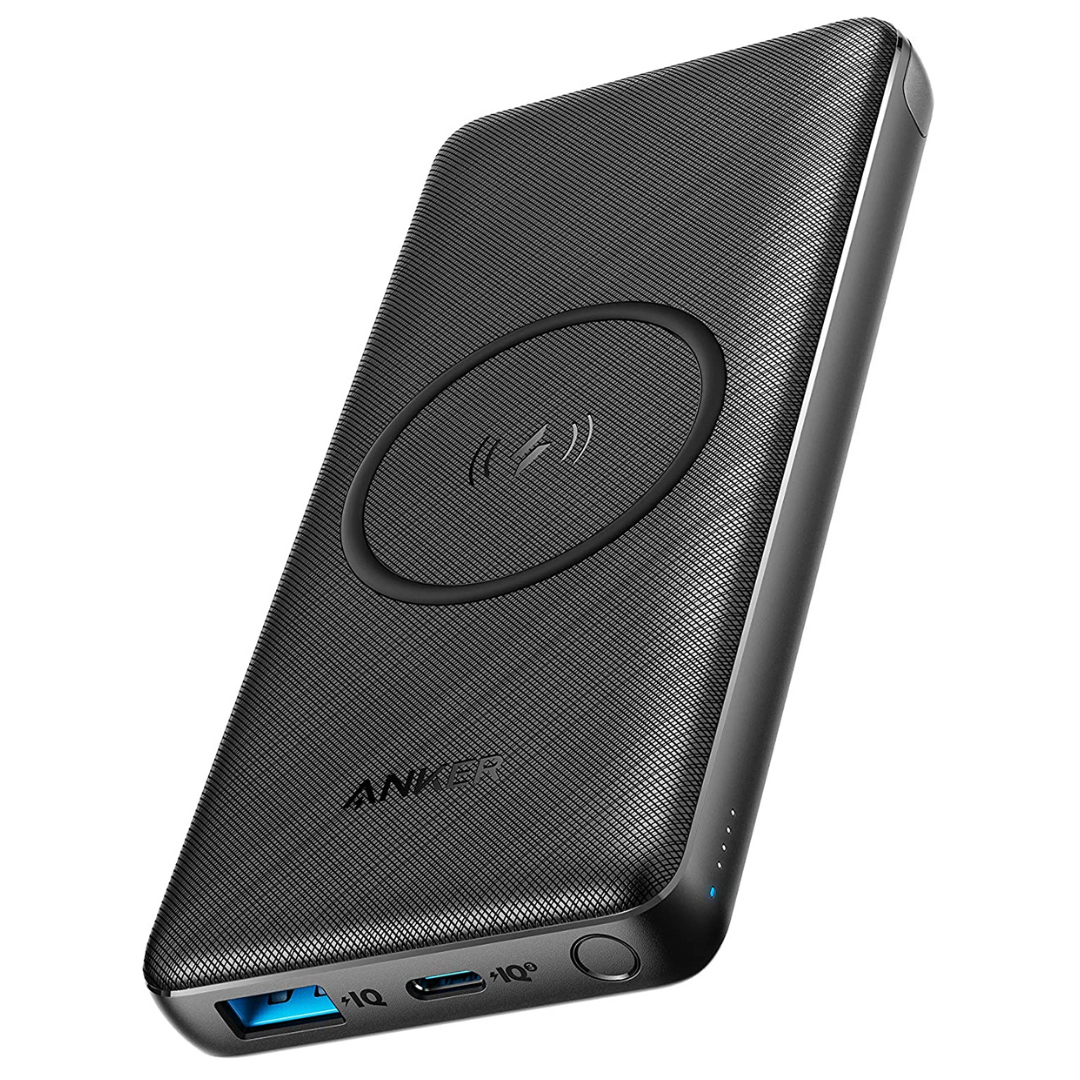
- Battery Capacity
-
10,000mAh
- Ports
-
USB-A, USB-C
Whether you prefer wired or wireless charging, the Anker PowerCore III 10K Wireless has got you covered. It’s a versatile power bank that features one USB-A and one USB-C port, the latter of which can deliver up to 18W fast charging to a connected mobile device. Plus, you get a Qi-charging pad to wirelessly top up your phone, true wireless earbuds, or tablet. But you will only get 10W wireless charging with Samsung phones, 7.5W with iPhones, and 5W with other smartphones. There is a 10,000mAh battery inside that should be enough to juice up most phones up to two times. And the company has included a slide-out hook to help you prop up your phone for hands-free media viewing. Anker doesn’t bundle a power brick, but that’s not unusual. However, you’ll get a USB-C to USB-C charging cable and a drawstring pouch to carry the power bank around. The pouch is spacious enough for the power bank and the charging cable, but nothing more.
It’s worth noting that Adaptive Battery doesn’t break your phone’s functionality. If I opened an old app again, it ran like normal. But until then, it wasn’t allowed to waste power doing things I didn’t ask for.
If you’ve been using the feature for a while, it won’t surprise you, but that small shift towards stopping apps from sneaking around in the background was all it took to stretch my battery several hours longer every day.
Why it’s smarter than micromanaging
Letting go of battery anxiety by letting your phone take control
I know this makes me sound like I was living in the Stone Ages, but before I made the switch, I used to manually kill apps from the recent apps screen, thinking that would save power.
I’d constantly switch on Battery Saver mode when my battery dropped precariously low. Sometimes I’d even uninstall apps just to prevent them from draining power.
It was a constant fight to eke out a few more minutes of battery life from my phone.
With Adaptive Battery turned on, I have stopped thinking about any of that. My phone has gradually become more efficient all on its own.
Apps that I opened regularly stayed quick and responsive. Apps I ignored just stopped being a battery drain.
The difference was especially noticeable with system-level processes and services that I couldn’t control directly. Adaptive Battery managed those, too, without requiring direct input and intervention from me.
Even more interesting was how well it worked alongside other system features.
Adaptive Brightness, which also learns from usage habits, started adjusting my screen levels more intelligently. I wasn’t constantly swiping down the brightness slider anymore. My phone just knew what I preferred at different times of day.
It hasn’t solved all my battery woes. Eventually, I had to set up a scheduled Battery Saver that kicks in when the battery drops below 20%. That gave me an extra layer of security when I’m away from home.
However, most of the time, I never got that low in the first place. Adaptive Battery gave me just enough headroom to stop fretting about my battery dying halfway through the day.
I no longer had to micromanage my phone, and that’s been a lifesaver.
The one battery fix you shouldn’t ignore
Adaptive Battery is the easiest change you shouldn’t ignore
If you’ve ever felt that your phone’s battery life is getting worse or that it doesn’t last as long as it used to, you’re not imagining things.
Modern apps and background processes are getting more demanding. Even when you’re not actively using your phone, it’s often doing more than you think.
Still, the solution doesn’t have to be complicated. You don’t need to become a battery-saving expert, micromanaging daily use, or install third-party apps. The solution is built into your phone. You just need to turn on Adaptive Battery.
It’s found under Battery Settings on most Android phones. Look for the section called Adaptive preferences or something similar. When it’s activated, give it a few days to learn your usage behavior. After it does, you’ll observe a tangible difference in how long your battery lasts.
Don’t go in expecting miracles. The feature won’t magically double your battery life or make your phone feel brand new. It will help you reclaim a few more hours and give you some headroom before you can go without recharging.
Most of all, it will free you from constantly worrying about your phone dying when you need it most.
For me, it’s gone a long way towards alleviating battery anxiety. And all it took was toggling one switch to make a difference. It’s the easiest fix that everyone should activate if they haven’t yet.
Source link
